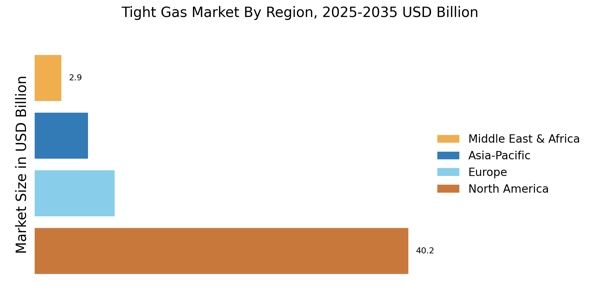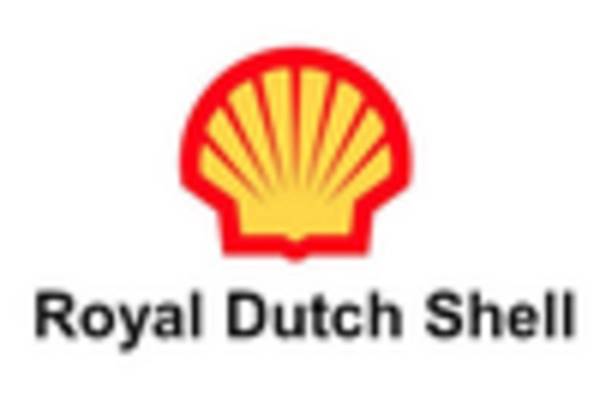Rising Demand for Natural Gas
The Tight Gas Market is witnessing a notable increase in demand for natural gas, driven by its role as a cleaner alternative to coal and oil. As countries strive to reduce carbon emissions and transition to more sustainable energy sources, natural gas is positioned as a vital component of the energy mix. Recent data indicates that natural gas consumption has grown by approximately 3% annually, with projections suggesting continued growth in the coming years. This rising demand is prompting investments in tight gas extraction, as producers seek to capitalize on the market's potential. Consequently, the Tight Gas Market is likely to expand, with increased production capacity and enhanced infrastructure to meet the evolving energy needs.
Environmental Regulations and Compliance
The Tight Gas Market is increasingly shaped by environmental regulations aimed at minimizing the ecological impact of gas extraction. Stricter compliance requirements are prompting companies to adopt cleaner technologies and practices in their operations. This trend is evident in regions where regulatory bodies are enforcing measures to reduce methane emissions and protect water resources. As a result, companies that proactively invest in sustainable practices may gain a competitive edge in the Tight Gas Market. Furthermore, adherence to environmental standards can enhance public perception and facilitate smoother project approvals, ultimately contributing to the industry's long-term viability and growth.
Geopolitical Factors and Energy Security
The Tight Gas Market is significantly influenced by geopolitical factors that affect energy security. As nations seek to diversify their energy sources and reduce dependence on imports, the focus on domestic gas production, particularly from tight formations, has intensified. This shift is evident in various regions where governments are implementing policies to encourage exploration and production of tight gas resources. For instance, countries with substantial tight gas reserves are likely to prioritize these resources to enhance energy independence. The interplay of geopolitical dynamics and energy security concerns is expected to drive investments in the Tight Gas Market, fostering growth and stability in the sector.
Investment in Infrastructure Development
The Tight Gas Market is benefiting from substantial investments in infrastructure development, which are crucial for enhancing production and distribution capabilities. The construction of pipelines, processing facilities, and storage systems is essential to support the growing output from tight gas formations. Recent reports indicate that infrastructure investments in the energy sector have increased significantly, with billions allocated to improve connectivity and efficiency. This influx of capital is likely to bolster the Tight Gas Market by facilitating access to new markets and optimizing supply chains. As infrastructure continues to expand, it may lead to reduced transportation costs and improved market competitiveness for tight gas producers.
Technological Innovations in Drilling Techniques
The Tight Gas Market is experiencing a surge in technological innovations that enhance drilling techniques. Advanced methods such as horizontal drilling and hydraulic fracturing have revolutionized the extraction process, allowing for more efficient recovery of gas from tight formations. These innovations have led to a significant increase in production rates, with some regions reporting output increases of over 50% in recent years. The integration of real-time data analytics and automation in drilling operations further optimizes resource management and reduces operational costs. As these technologies continue to evolve, they are likely to drive the Tight Gas Market towards greater efficiency and profitability, attracting investments and fostering competition among key players.


















Leave a Comment